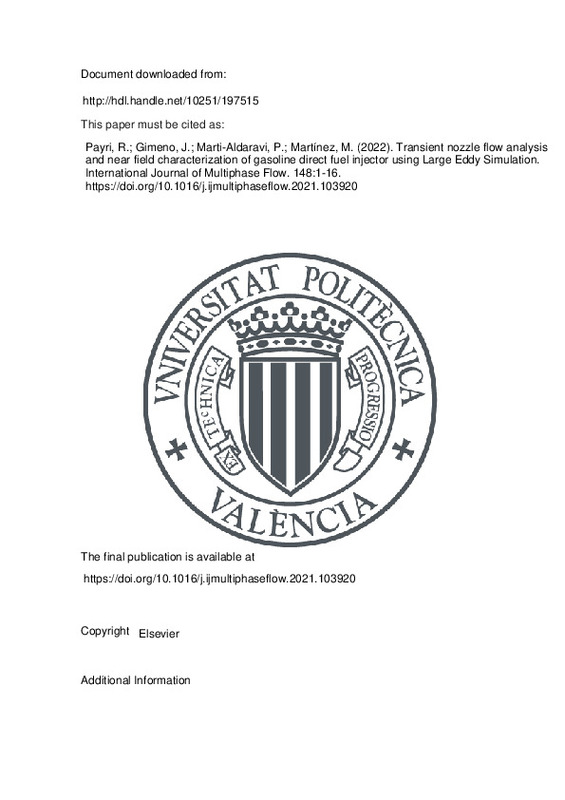JavaScript is disabled for your browser. Some features of this site may not work without it.
Buscar en RiuNet
Listar
Mi cuenta
Estadísticas
Ayuda RiuNet
Admin. UPV
Transient nozzle flow analysis and near field characterization of gasoline direct fuel injector using Large Eddy Simulation
Mostrar el registro completo del ítem
Payri, R.; Gimeno, J.; Marti-Aldaravi, P.; Martínez, M. (2022). Transient nozzle flow analysis and near field characterization of gasoline direct fuel injector using Large Eddy Simulation. International Journal of Multiphase Flow. 148:1-16. https://doi.org/10.1016/j.ijmultiphaseflow.2021.103920
Por favor, use este identificador para citar o enlazar este ítem: http://hdl.handle.net/10251/197515
Ficheros en el ítem
Metadatos del ítem
| Título: | Transient nozzle flow analysis and near field characterization of gasoline direct fuel injector using Large Eddy Simulation | |
| Autor: | Martínez, María | |
| Entidad UPV: |
|
|
| Fecha difusión: |
|
|
| Resumen: |
[EN] Injection duration in spark ignition engines is typically very short. Thus, understanding transient effects of the Gasoline Direct injection (GDi) process plays a major role in the analysis of the mixture formation ...[+]
|
|
| Palabras clave: |
|
|
| Derechos de uso: | Reconocimiento - No comercial - Sin obra derivada (by-nc-nd) | |
| Fuente: |
|
|
| DOI: |
|
|
| Editorial: |
|
|
| Versión del editor: | https://doi.org/10.1016/j.ijmultiphaseflow.2021.103920 | |
| Código del Proyecto: |
|
|
| Agradecimientos: |
This research was funded by Generalitat Valenciana through project reference AICO/2020/208 titled "Nuevos conceptos en inyeccion de gasolina (NCIG)''. Additionally, authors would like to thank the "Fundacion del Centro de ...[+]
|
|
| Tipo: |
|







![[Cerrado]](/themes/UPV/images/candado.png)


